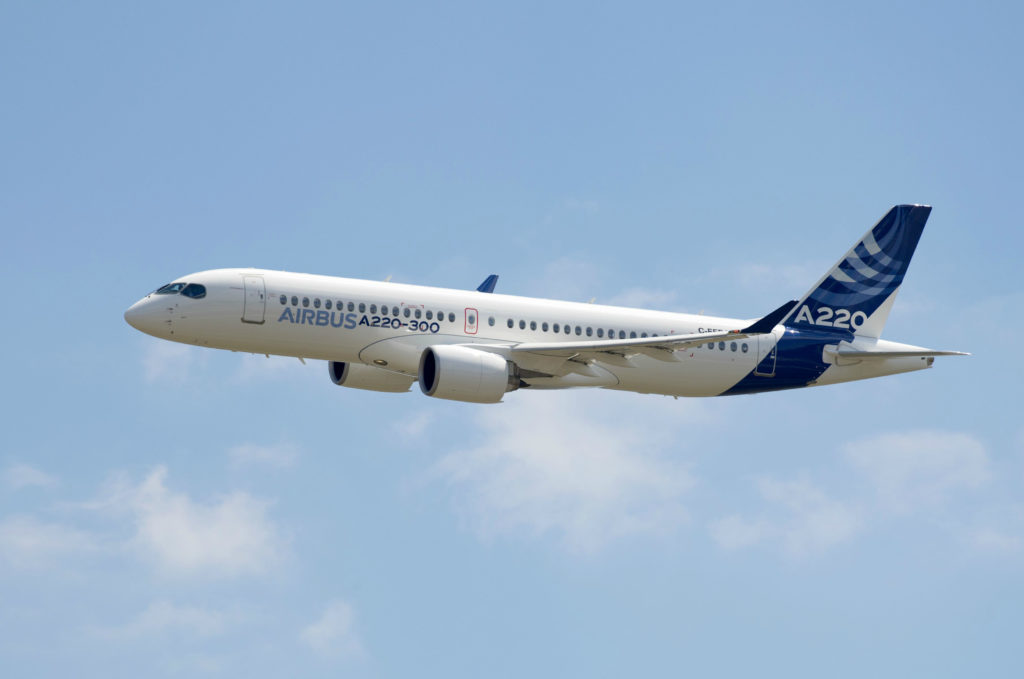Estimated reading time 5 minutes, 25 seconds.
When Tom Enders, then the chief executive officer of Airbus, announced in October 2017 that Canada would become the company’s fifth home country and first outside of Europe, following a deal with Bombardier to acquire a majority stake in the C Series passenger jet, small- and medium-sized Canadian aerospace companies had reason to be optimistic.

Canada has typically ranked eighth or ninth among Airbus suppliers. But with the C Series now firmly under the Airbus tent (it was renamed the A220 in July), a contract award in 2016 to provide the Royal Canadian Air Force with 16 C295W fixed-wing search and rescue (FWSAR) aircraft, and looming competitions for a future fighter jet and strategic tanker and transport aircraft, Airbus is aggressively sourcing more Canadian content.

Before you make your pitch, however, Ruben Tauste Caro, responsible for Airbus’s strategic procurement in North America, has a few words of advice: no bashing the competition, no me-too products, and go easy on the wonders of your new shop floor machinery.
“I want you to tell me that you work in a very, very dedicated frequency. And in that frequency, I want you to tell me that you are the expert in a very specific niche. Then you’ve got me,” he told the Abbotsford Aerospace, Defence and Security Expo in August.
Airbus routinely conducts in-person assessments of its prospective suppliers and, while cost, quality, and on-time production are obvious baseline requirements, what interests Tauste Caro are signs of continuous improvement and true innovation. He said companies that claim to build a better mouse trap or be a one-stop shop for all his supply needs are quickly dismissed.
“Tell me what you are really, really good at, and if I have an opportunity in the future, that will be yours,” he said.
Continuous improvement need not involve large investments. A dashboard with measurable targets will suffice if it clearly shows progress, said Tauste Caro. “Show me your KPIs [key performance indicators]. If you don’t [meet] a target that month, do you have an action behind it?”
A clear ability to set and reach targets is important, he emphasized, because if there is ever an issue with product quality, “The question is, will you overcome that issue? Do you have the right procedures, the right way of working? Is your workforce engaged?”
That’s why he also asks questions about innovation. Most companies have a tendency to highlight their shop floor. While new machines and robotics are important, he always looks beyond to the people operating them.
“Innovation is people,” he said. “{They] are the key parameters in the innovation equation…[D]on’t waste time on machines, tell me your way of working.” In particular, how do ideas move from the shop floor to the C-suite?
For suppliers eyeing opportunities with Airbus’s commercial aircraft production, an ability to ramp up production and deliver at high rates is critical. “This is extremely important,” he stressed. “We cannot afford to have one aircraft system stopped in the warehouse.”
Tauste Caro heads a small four-person team responsible for supplier identification and development throughout North America, so he encouraged companies to call or “knock on the door,” to keep him apprised of product changes, expansion plans, new strategies, and contract awards.
“Feed me with that information. That is the daily bread and butter of my job within strategic procurement,” he said, explaining that if he’s asked to recommend a supplier, “I have to be able to answer right away.”
While ramp-up of A220 production this year and delivery of the first FWSAR aircraft in 2019 might mean more opportunities for Canadian suppliers, Airbus is particularly focused on the value proposition it can offer in a future fighter jet and air-to-air refuelling aircraft competition.
“We need to work with you right now,” he told executives at the Abbotsford trade show, to identify industrial and technological benefits (ITBs) proposals for both programs and meet FWSAR obligations.
There is a “huge requirement” for ITBs within the fighter jet program, he noted. “We need to be creative, we need the suppliers.”








